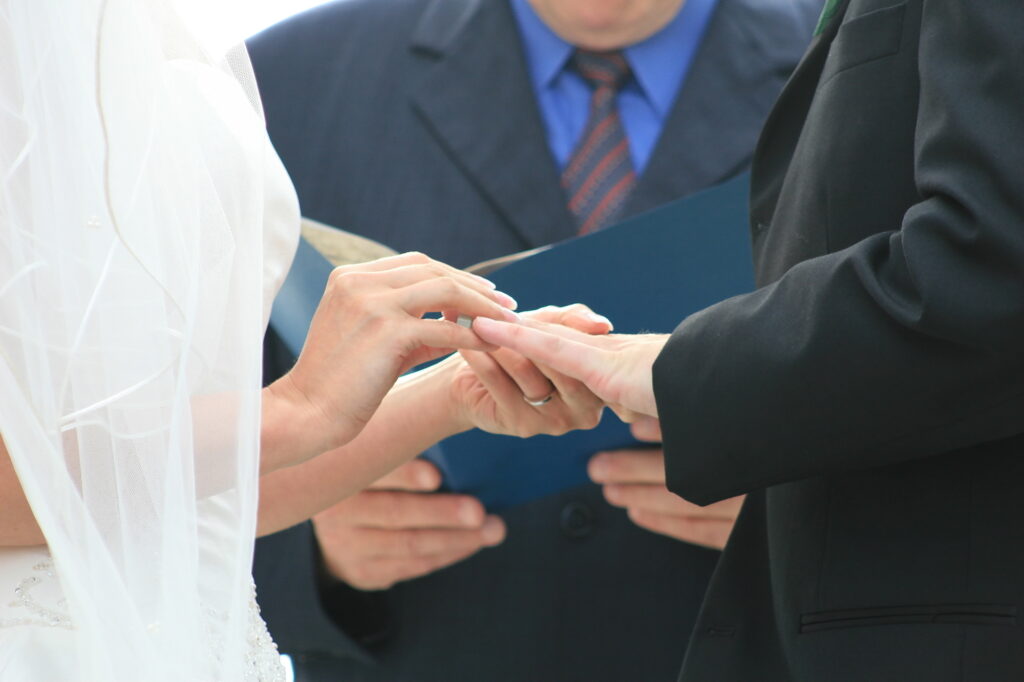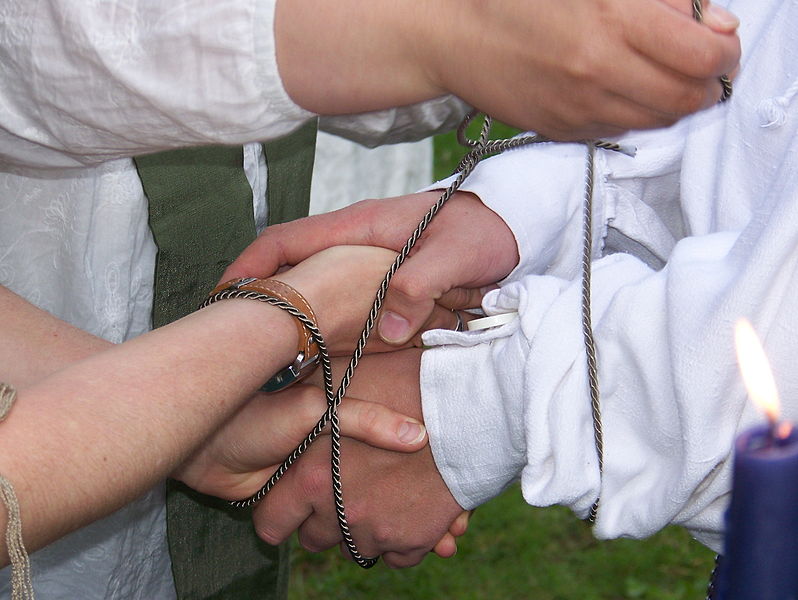
Writing a wedding ceremony script is a pretty niche writing activity. Chances are you don’t spend your free time writing wedding ceremony scripts. If you do, you may want to contact American Marriage Ministries, as they will likely be interested in your skills.
Writing a wedding ceremony script is not difficult. Wedding ceremonies follow an established format, so most of the work is done for you. To use a metaphor of building a house…the floor, walls, and roof area already done for you.
Your job in writing the ceremony is to decorate and paint the house house according to the couple’s aesthetic desires. You may add a room or two but you won’t be writing a George R.R. Martin length novel.
So…before we start writing, let’s take a look at the parts and common formatting of a wedding ceremony.
The Parts of a Wedding Ceremony

The information in this section was largely sourced from this page.
In its most basic incarnation, a Wedding Ceremony can be broken down into 6 parts. From beginning to end these parts are:
- The Procession
- The Invocation
- The Declaration of Intent
- The Vows and/or Rings Exchange
- The Pronouncement
- The Recession
One could even reduce this model down to five parts by removing the “Vows and Rings Exchange”. However since this is such a common part of most weddings we have included it here.
Wedding Ceremony Parts Explained

Below are brief descriptions of each wedding ceremony part to explain the purpose and what happens in each part.
1 The Procession
This is the beginning of the wedding ceremony. It is called the “processional” in reference to the procession, or entrance of the wedding party, bride, and groom.
2 The Invocation
No, this is not a hand holding demonic ritual. The “invocation” is where the officiant first addresses the audience and “invokes” the start of the wedding ceremony. This is where the officiant says something like, “Dearly beloved, we are gathered here today…”.
3 The Declaration of Intent
This is the “Do you….I do.” part of the wedding ceremony. In other words, where the couple declares their intent to marry. The Declaration of Intent is the verbal version of the marriage license, where the couple states in front of witnesses that they are knowingly entering into the marital contract.
In California, the Declaration of Intent is a required part of the wedding ceremony. This is somewhat of a moot point as all wedding ceremonies, by definition, should include a Declaration of Intent.
4 Vows and/or Rings Exchange
The vows and rings exchange is a relatively modern inclusion in the wedding ceremony. Since it is so common, we have included it here because most wedding ceremonies will have one or both of these parts.
The name is pretty self-descriptive so we do not feel this needs further elaboration.
5 The Pronouncement
This is where the officiant “pronounces” the couple to be wed. Common phrasing in the pronouncement goes something like this, “By the power vested in me by the internet, I now pronounce you…”.
6 The Recession
This is where you check your stock options to see if you lost your shirt. Just kidding. The recession marks the end of the wedding ceremony. This is where the couple and the wedding party “recede” from the ceremony venue.
The Recession usually follows a specified order. You will know what this is during the ceremony rehearsal. In conventional weddings everyone leaves in this order.
- The Wedded Couple
- The Bridesmaids and Groomsmen
- The parents of the couple
- The Wedding Audience
- The Officiant
This format is not set in stone and should be clear to you by the time you will be officiating the wedding.
Officiant Speaking Parts in a Wedding Ceremony

In the basic ceremony described above, the officiant has three speaking parts. They are:
- The Invocation
- The Declaration of Intent
- The Proclamation
The officiant may also speak during the rings and vows exchange to help facilitate that part of the ceremony.
Other Wedding Ceremony Rituals

The format described above is for a basic wedding ceremony. The couple may also want to include other rituals to the ceremony to give it more character. Common additional wedding ceremony rituals include:
- Prayer
- Bible Reading
- Poetry Reading
- Sand Ceremony
- Water Ceremony
- Candle Ceremony
- Wine Ceremony
- Love Letters Ceremony
- Tree Planting Ceremony
- Handfasting Ceremony
- Flowers Ceremony
There are plenty more rituals and there is no reason why you and the couple can’t come up with your own unique ideas. You can check out these sample wedding ceremony scripts for a better idea of how these rituals can be included in the ceremony you will be conducting.